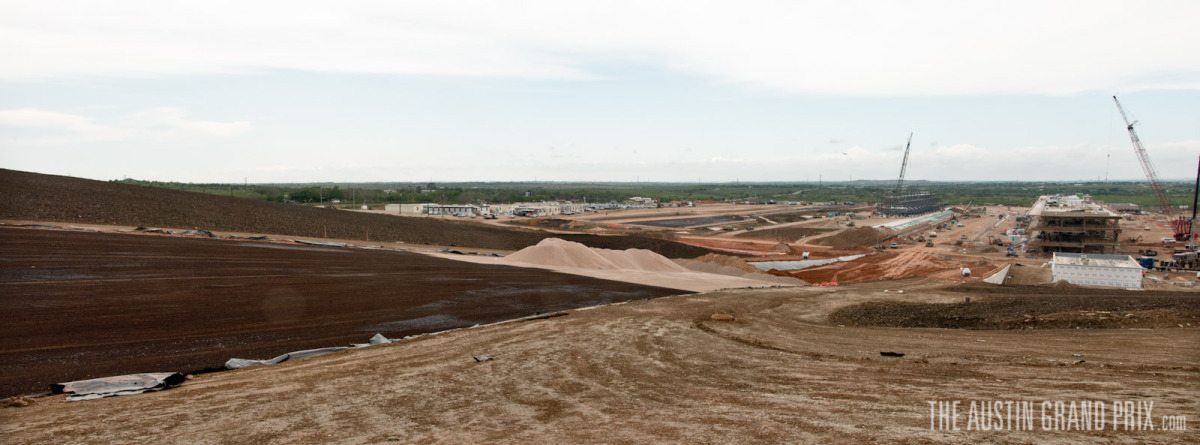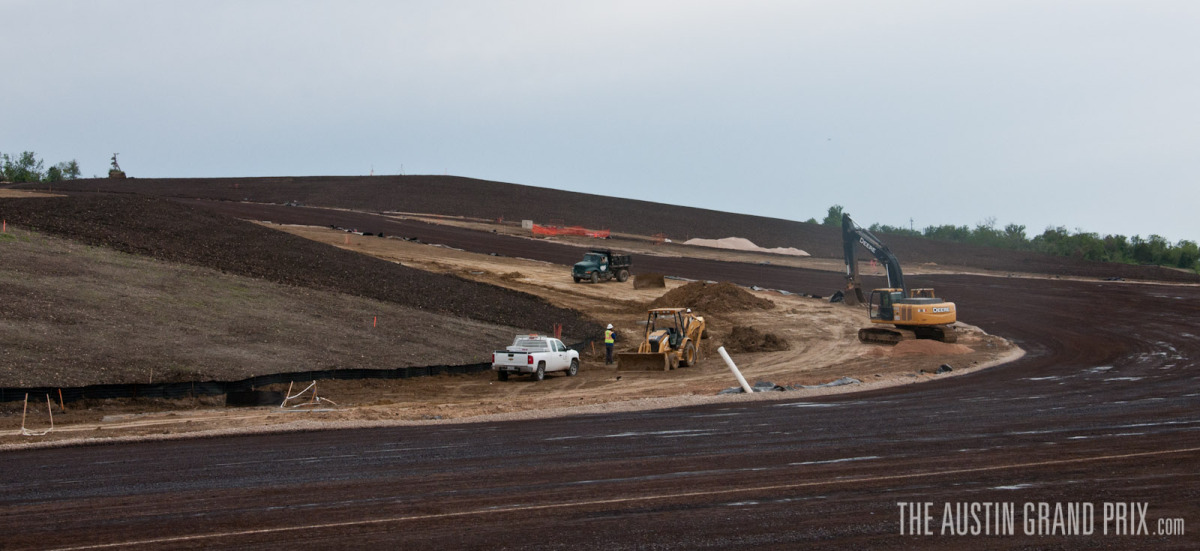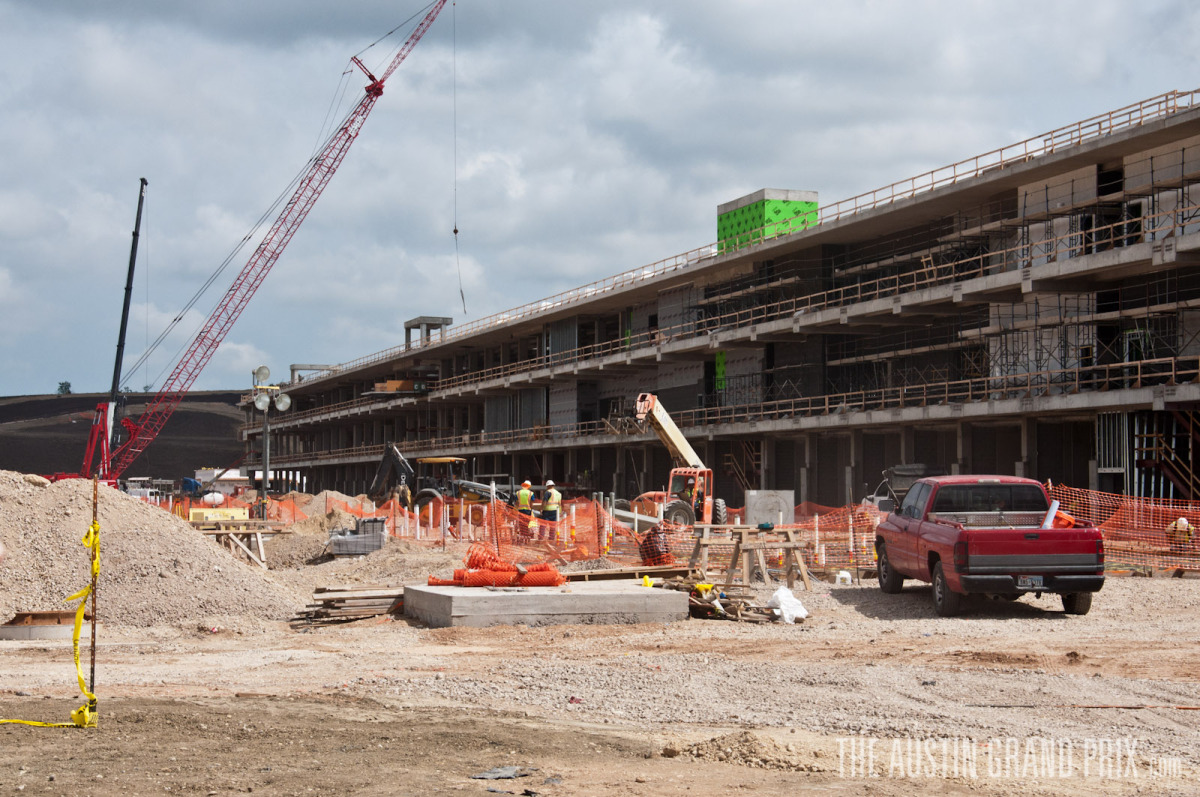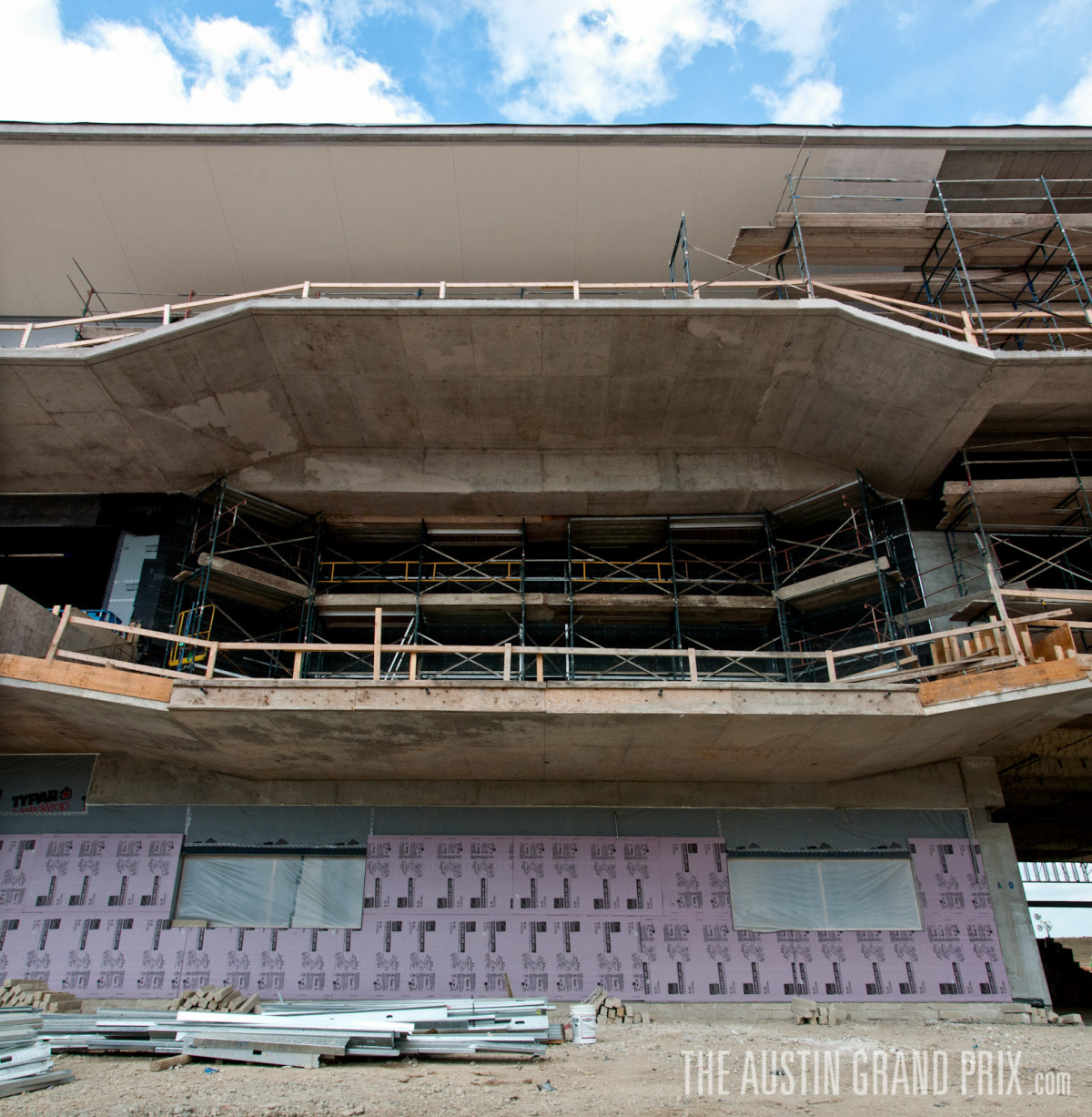// Background
Recently, we had the pleasure of being welcomed out for a private tour of Circuit of The Americas by the designers of the track, Tilke Engineering. Since the Topping Out ceremony just a few weeks ago, the buzz around Austin and the motorsports industry is that Austin is shaping up to be a great venue. In just one short year, the project has completely transformed from a quiet piece of land into a busy, complex, and well-oiled machine. Hundreds of workers help the project move along at impressive speed, achieving milestones weekly and transforming the landscape into a world-class facility.
The most current milestone for the project is the first stages of the asphalt which are currently being poured. Running ahead of schedule according to the sub-contractor in charge of this portion, they have begun laying down the initial sealant to the track, the first layer of the asphalt composition which sits on top of the gravel. Approximately 20-25% of the track has this sealant in place and the crews are moving along to complete this in the coming weeks. The track itself will receive three layers of asphalt before it's completed, with each layer being blended, cured and leveled to intense specification. This process will commence over the next few months as the team plans to have the track complete in August.
// The Tour
For the tour, we discussed the overall plan and and design of the track atop turn one, looking across the whole project and observing the grandiose turn one. Next, we rode around the track for the first time, seeing each turn and getting a complete view of the entire project. As Kerri said it in this article, and I'll say again, the magnitude of this project is immense and truly stunning. Standing from a top turn one gives an unparalleled perspective of COTA, however, nothing beats driving along the same path that will host the world's best motorsports series and their drivers.
Our tour continued from turn one around the entire track where we stopped to take some photos and talk about the specifics of the area. I was particularly excited about going out to turn 11 and traveling down the back straight to turn 12. At just over 1 Kilometer, approximately 5/8th's of a mile, the back straight is long and has a nice slight right slant to it in addition to some mild elevation change. Cars entering turn 12 will be passing each other at 200mph, making the area around turn 12 an entertaining place to watch the race.
We observed the crews working on turn 15 before we moved back to the paddock building to walk around a bit and see what's changed. Already the exterior stucco and stone cladding is being applied on the media center and the west end of the paddock building. Just behind the paddock, foundations for the team buildings are being poured as well, none of which were even started even just a few weeks since the Topping Out ceremony. Overall, the activity around the paddock and main grandstand is contagious, and already I could hear the sounds of cars coming off of turn 20, heading down the main straight.
In a little over six months our Inaugural Formula 1 race will commence at Circuit of The Americas, making the reality of the project even more exciting. We'd like to give an special thank you to our tour guides from Tilke Engineering for inviting us out for an exclusive tour of Circuit of The Americas. They provided immense knowledge of the project, sharing with us the difficulties needed to overcome the soil conditions on the site and the techniques and expertise they've brought to the table after working on several recent Formula 1 facilities. As a student of Architecture, this was a real treat for me, learning more about the technical specifications and strategies used to construct this track. I'm thoroughly impressed with the Tilke team and their commitment to the project from day one, we definitely have the right guys on the job here in Austin.
// Lots More Photos In The Gallery





